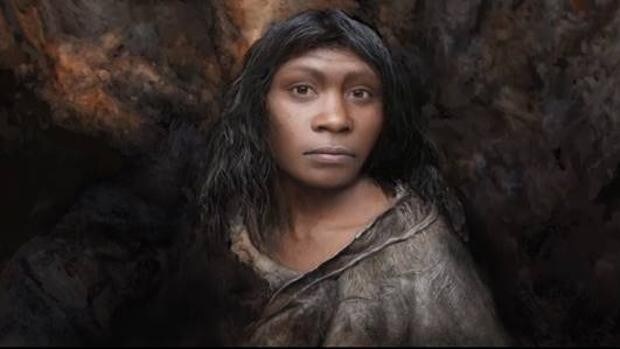 The Gran Dolina boy is one of the most emblematic fossils of the Atapuerca mountain range in Burgos. Belonging to the Homo antecessor species, dating back some 800,000 years, his remains were discovered during an excavation in 1994. Since then, he has been considered a boy, but a new analysis of his teeth has revealed that he is actually a girl. The girl was between 9 and 11 years old when she died, having been the victim of cannibalism.
The Gran Dolina boy is one of the most emblematic fossils of the Atapuerca mountain range in Burgos. Belonging to the Homo antecessor species, dating back some 800,000 years, his remains were discovered during an excavation in 1994. Since then, he has been considered a boy, but a new analysis of his teeth has revealed that he is actually a girl. The girl was between 9 and 11 years old when she died, having been the victim of cannibalism.
The research, published in the Journal of Anthropological Sciences, was led by Cecilia García Campos, of the Dental Anthropology Group at the National Center for Research on Human Evolution (Cenieh). This is not the first time that the sex of a Homo antecessor has been known. An analysis of the proteins in the enamel of a tiny tooth fragment, smaller than a fingernail, already revealed last year that it belonged to a male individual. However, this information was unknown for the two most famous fossils of these hominids, found in level TD6 of Gran Dolina: individual H1, from which the species itself was defined, and H3, known until now as the Gran Dolina boy, a reference to the title of the popular science book by José María Bermúdez de Castro, co-director of the Atapuerca site.
Since studying proteins would mean destroying the fossils, García Campos decided to approach the problem differently. First, he performed an analysis of dental tissue from a sample of the current population and was able to assign the sex of each individual with a 92.3% accuracy rate. The fossils of H1 and H3 were then analyzed using microcomputed tomography, which allowed for a 3D reconstruction of the teeth and observation of dentin, root volume, enamel, and other details. The results showed differences comparable to those observed between modern men and women. This allowed the team to affirm with a high degree of certainty that H1 was a male—something the researchers already suspected based on his size and other characteristics—while H3 provided the big surprise: she was probably a female. The boy from Gran Dolina thus became the girl from Gran Dolina.
Of this girl, we only know a partial face and a fragment of the frontal bone, although she often appears in photographs alongside a jawbone found in 2003, which, interestingly, is considered most likely female. Researchers estimate that she was between 9 and 11 years old when she died. Since these ancient individuals developed earlier, her characteristics, such as height and body proportions, would be comparable to those of a 12- or 13-year-old girl in the 21st century. The species averaged over 1.65 meters.
Cannibalism
What is very well known is how her story ended. Her remains, like those of H3 and other individuals from level TD6 of Gran Dolina, clearly show that they were victims of an act of cannibalism. "It's the oldest and best-documented case of cannibalism," says Bermúdez de Castro, who, however, is convinced that the practice was already common long before that. The girl's skeletal remains show "the blows, the breaks, the marks of fleshing when they remove the muscle..." he lists.
Those who committed this atrocity (at least from our perspective) didn't do it out of hunger. "The climate was very good, better than what we have now in Burgos, there was plenty of water and a lot of wildlife that provided abundant food," the paleontologist notes. The teeth of the girl and other individuals of her species bear no marks or scars that could be signs of famine. "Nor was it a ritual," he continues, "since the remains were left behind haphazardly."
The researchers considered two hypotheses to explain why this young animal had been eaten by its peers. The first was that they were two different species, "which would make it a case of predation, like when a lion eats a gazelle, but this is very unlikely," says Bermúdez de Castro. In his opinion, the most likely explanation is that there was only one species, Homo antecessor, and that, for example, a rival group arrived at the scene, killed them, and devoured them. Not because they were starving, but because of a cultural issue."
Bermúdez de Castro doesn't give much thought to the fact that her boyfriend from Gran Dolina is now a girl. "It doesn't affect me at all. I have three daughters and a son, and I love them all equally. One day I began to wonder: what if he was feminine? Well, it turned out he was. I don't care; I love girls too."
